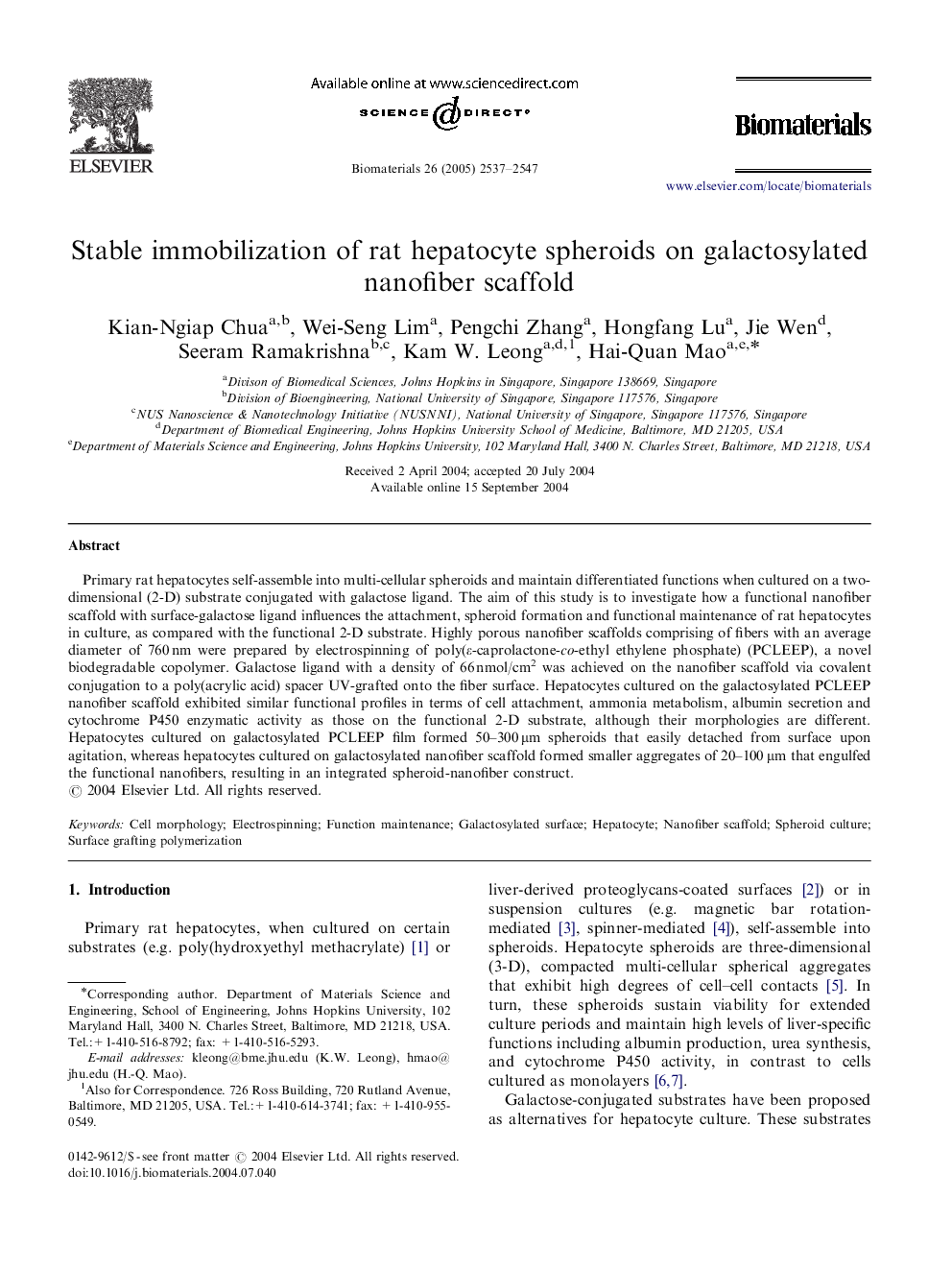| Article ID | Journal | Published Year | Pages | File Type |
|---|---|---|---|---|
| 12820 | Biomaterials | 2005 | 11 Pages |
Primary rat hepatocytes self-assemble into multi-cellular spheroids and maintain differentiated functions when cultured on a two-dimensional (2-D) substrate conjugated with galactose ligand. The aim of this study is to investigate how a functional nanofiber scaffold with surface-galactose ligand influences the attachment, spheroid formation and functional maintenance of rat hepatocytes in culture, as compared with the functional 2-D substrate. Highly porous nanofiber scaffolds comprising of fibers with an average diameter of 760 nm were prepared by electrospinning of poly(ε-caprolactone-co-ethyl ethylene phosphate) (PCLEEP), a novel biodegradable copolymer. Galactose ligand with a density of 66 nmol/cm2 was achieved on the nanofiber scaffold via covalent conjugation to a poly(acrylic acid) spacer UV-grafted onto the fiber surface. Hepatocytes cultured on the galactosylated PCLEEP nanofiber scaffold exhibited similar functional profiles in terms of cell attachment, ammonia metabolism, albumin secretion and cytochrome P450 enzymatic activity as those on the functional 2-D substrate, although their morphologies are different. Hepatocytes cultured on galactosylated PCLEEP film formed 50–300 μm spheroids that easily detached from surface upon agitation, whereas hepatocytes cultured on galactosylated nanofiber scaffold formed smaller aggregates of 20–100 μm that engulfed the functional nanofibers, resulting in an integrated spheroid-nanofiber construct.
